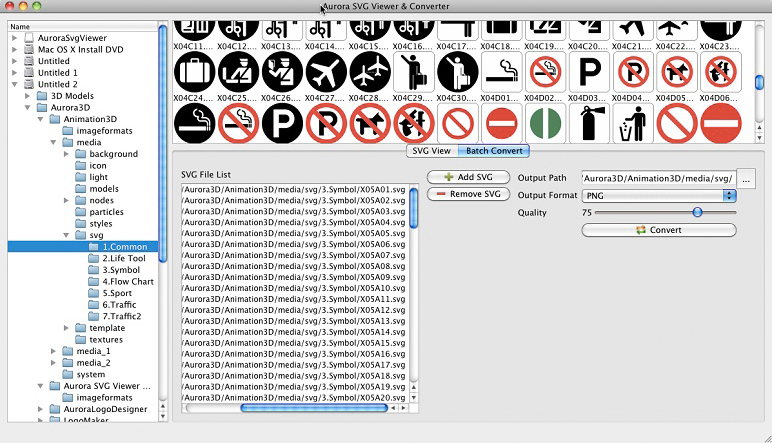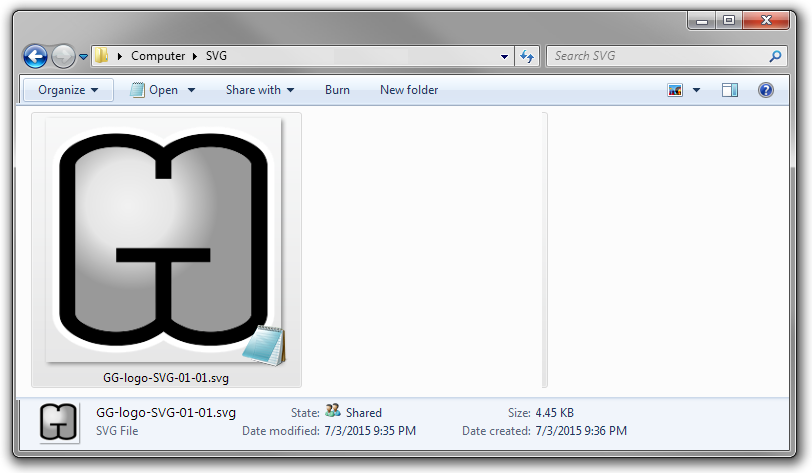

Instead of a single file containing the entire icon cache, Windows 8 uses multiple cache files, based on the size and type of icon. Windows 8 introduced a new icon and thumbnail cache system. I know this question was asked about Windows 7, but I thought it would be useful to add instructions for Windows 8 and above. It will kill all Windows Explorer processes, which is required before you can delete the icon cache, then delete the icon cache, and, finally, reboot your system.Īs noted by below, the last line, "shutdown /r /f /t 5 /d 02:04", can simply be replaced with "explorer.exe", getting rid of the need to reboot. Per the comment by John Rasch, if you can't see the SVG thumbnails after following the steps above, you can clear your icon cache using the following batch file: OFFĬopy this to RebuildIconCache.bat and run it as Administrator. This extension has worked perfectly for me on both Win7_圆4 and Win8_圆4! In fact, I was recently pleasantly surprised to learn that it displays thumbnails for compressed SVGZ images as seamlessly as it does the non-compressed versions. If not, then simply reboot your system so that the new explorer extension can load.įrom then on, all SVG images will show up as thumbnails in Windows Explorer. NOTE: Please do the above step only if you're comfortable with killing and restarting processes through the Task Manager. In the dialog box, simply type explorer and hit OK. From the Task Manager menu, choose File->Run new task menu.

Once installed, open Task Manager and kill all instances of explorer.exe.
#Adobe svg viewer windows 10 install
Download and install Dotz Software SVG Explorer Extension, aka DSSEE.

It’s generally much harder to convert a raster image to a vector file than the other way around because it requires more computing power.Adobe Illustrator isn't the only way to do this, nor is it the best way to do this.įollow the link he provided to the SVG Explorer Extension. Editing vectors in raster-based software can prove difficult. You’ll need a vector-based design program like Adobe Illustrator to open and work on vector files. Vector files tend to be more suitable for graphics rather than photographs. Highly detailed digital photos may be better suited to the raster format, where their individual pixels can be edited. These are some of the disadvantages of using vector files: You can add shapes, text, different colors, and filters to create unique illustrations and designs - plus, you can easily go back and edit over and over again. The bigger you stretch them, the more the quality can decline.īy avoiding blocks of pixels, vector files tend to be more lightweight than raster images such as photos, which can feature lots of camera data. In contrast, raster files only maintain their resolution when fitted to a specific size. There’s virtually no limit on how big you can make a vector image without losing its resolution. Some of the major benefits of vector files include: There are both pros and cons to using vector images over the raster format. All three offer their own specific advantages, disadvantages and ultimately, use cases.Īdvantages and disadvantages of vector files. Basically, vectors don’t lose quality when resized.Īt the same time, don’t confuse either raster or vector formats with RAW files, which are unaltered, uncompressed images made up of direct data taken from a camera’s sensors. They’re created with mathematical equations, lines, and curves - using points fixed on a grid - which means images can be made infinitely larger (or smaller) without losing resolution. This means raster files can become distorted if you resize them beyond the amount of space the pixels were meant to fill. Raster files are composed of a fixed number of square pixels. They’re formed in different ways and are better suited to some projects than others. When you work on any digital project, you’ll encounter two distinct types of image files - raster and vector. Let’s take a step back before actually defining the vector file.


 0 kommentar(er)
0 kommentar(er)
